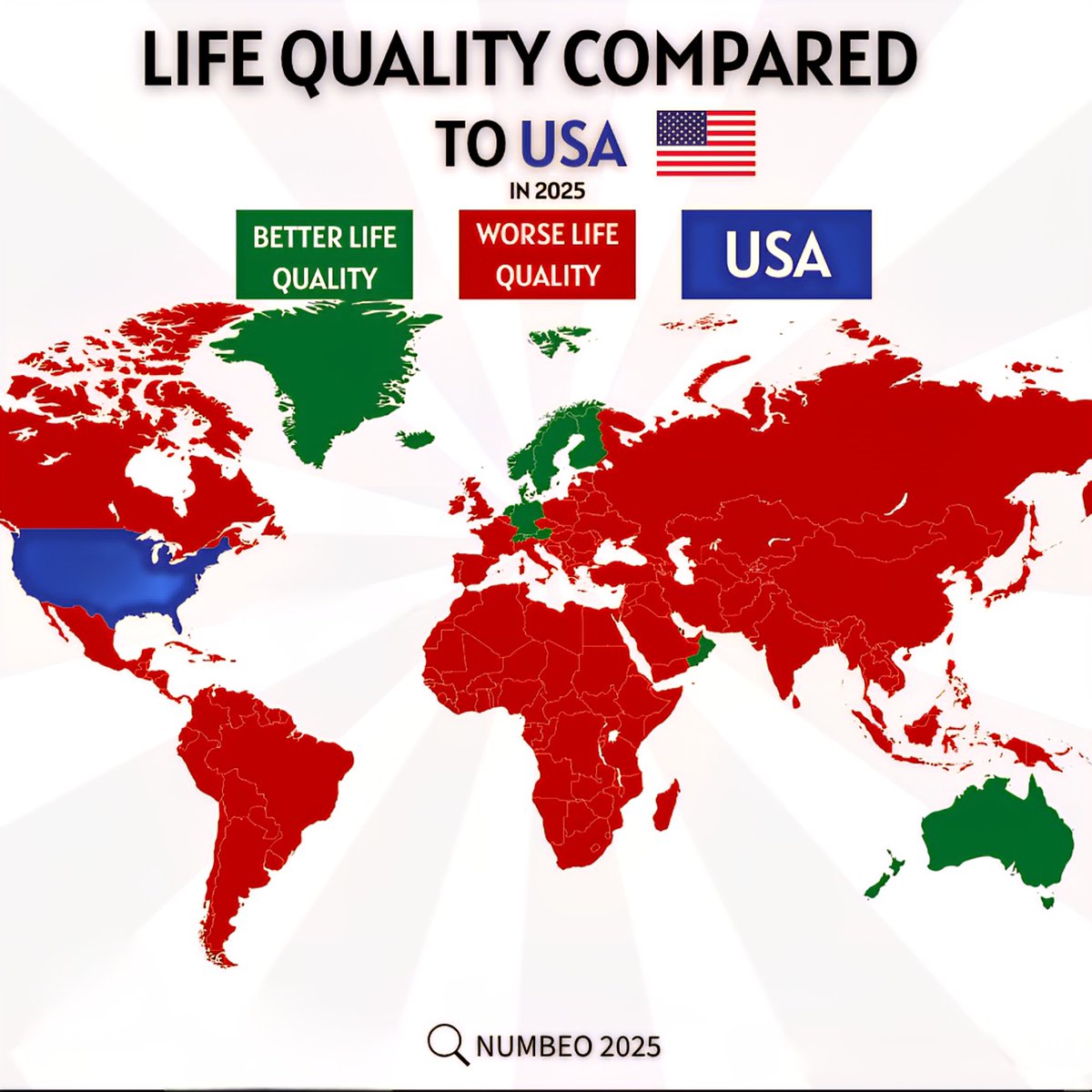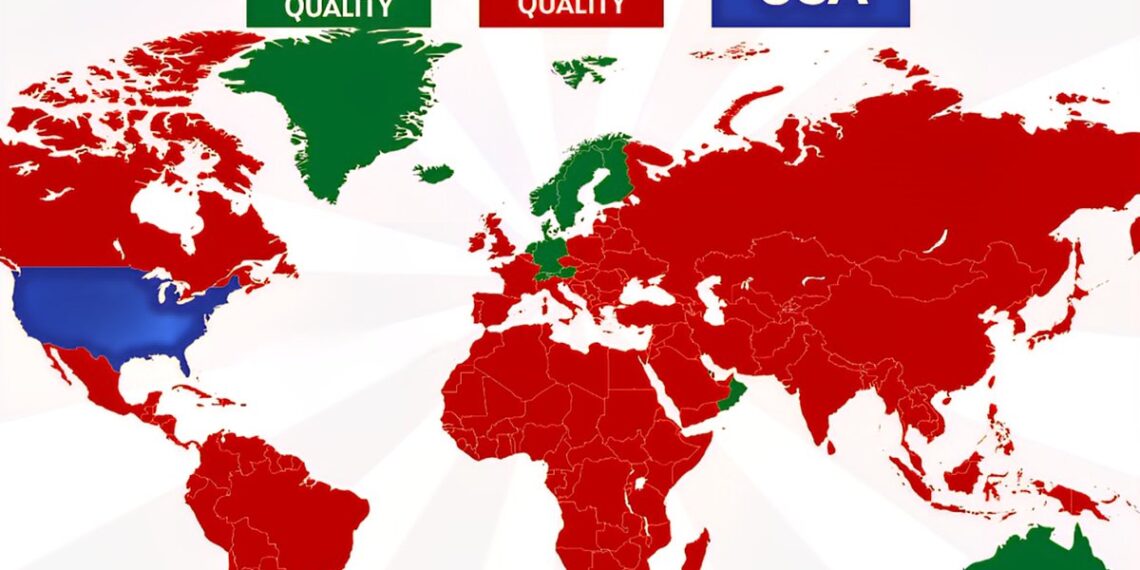Select Language:
1. Healthcare System Efficiency and Accessibility
In 2025, the United States continues to face scrutiny over its healthcare system, which remains less accessible and more expensive compared to global standards. Many countries, especially those in Europe, Canada, and Australia, have adopted universal healthcare models that prioritize patient access and preventive care. Meanwhile, Americans often encounter lengthy wait times, high out-of-pocket expenses, and disparities in healthcare coverage. Countries with robust national health services, such as Canada and the UK, often garner higher ratings in overall health outcomes and patient satisfaction. The ongoing debate in the U.S. revolves around reforming the system to improve affordability and equity without compromising quality.
2. Work-Life Balance and Stress Levels
Work culture significantly impacts the quality of life, and in 2025, Americans are experiencing some of the highest stress levels globally. The U.S. workforce tends to work longer hours with fewer paid leave days than their counterparts in nations like France, Germany, and Scandinavia. These countries emphasize work-life balance, offering extensive paid vacation, shorter workweeks, and strong labor protections. Consequently, residents in these regions report lower stress and higher overall happiness. Despite technological advances that enable remote working, the U.S. struggles with burnout, which directly affects physical health, mental well-being, and family life.
3. Education and Child Development Opportunities
When it comes to education quality and opportunities for child development, the U.S. remains competitive but faces challenges. Compared to countries like Finland, Japan, and South Korea, American students often lag in core academic skills, yet the diversity and innovation within U.S. education provide unique opportunities. Access to quality early childhood education varies significantly across states, affecting long-term life prospects. Countries with well-funded, equitable education systems tend to produce more well-rounded students with better social-emotional skills, thereby enhancing their overall quality of life into adulthood.
4. Environmental Quality and Sustainability Efforts
Environmental conditions are a key factor in overall life quality, and the U.S. has seen mixed progress in 2025. While some states have made substantial investments in clean energy and pollution control, overall air and water quality remain a concern in urban centers. Countries like Germany, Sweden, and New Zealand lead in sustainability initiatives, boasting cleaner air, efficient waste management, and a strong commitment to renewable energy. These efforts contribute to healthier living environments and a higher standard of well-being. Americans increasingly recognize the importance of environmental health, but policy volatility continues to challenge consistent progress.
5. Crime Rates and Public Safety
Public safety is another critical aspect influencing life quality. In 2025, the U.S. experiences higher crime rates in certain urban areas compared to countries like Japan, Australia, and Singapore, which boast some of the lowest violent crime rates worldwide. This disparity affects residents’ sense of security and their overall quality of life. Many of these safer nations implement comprehensive policing strategies, community engagement, and social programs that tackle root causes of crime. Americans are increasingly advocating for models that foster safer communities, recognizing the profound impact of safety on mental health and community cohesion.
6. Social Welfare and Community Support
The strength of social safety nets significantly influences citizens’ well-being. European nations such as Denmark, the Netherlands, and Norway offer extensive social welfare programs, including unemployment benefits, social housing, and robust healthcare coverage. This comprehensive support system reduces poverty and boosts social cohesion. In contrast, the U.S. has a more fragmented social safety net, which can leave vulnerable populations underserved. The ongoing discussion centers on expanding social programs to promote equality and long-term stability, thereby enhancing overall societal happiness and life satisfaction.
7. Urban Planning and Housing Quality
Affordable housing and urban planning are vital for quality living. In 2025, American cities face housing affordability crises, especially in major metropolitan areas like New York, San Francisco, and Los Angeles. High housing costs intensify stress and reduce disposable income, impacting quality of life. Conversely, cities in countries such as Austria, Sweden, and Canada prioritize sustainable urban development, with green spaces, efficient transit systems, and affordable housing options that promote healthier, more connected communities. Well-designed urban environments foster social interaction, physical activity, and mental wellness.
8. Cultural Engagement and Personal Fulfillment
Cultural opportunities play a significant role in overall happiness and fulfillment. The U.S., with its diverse cultural scene, offers abundant entertainment, arts, and recreational activities. However, in 2025, many Americans report feeling overwhelmed by the fast pace of life, leading to a decline in leisure and cultural engagement. Countries that prioritize cultural preservation, access to arts, and community activities—such as France and Italy—tend to have residents with higher reported life satisfaction. Promoting work-life balance and accessible cultural programs can enhance personal growth and community connectedness.

Comparison of world life quality standards shows diverse strengths and challenges for the United States in 2025.





